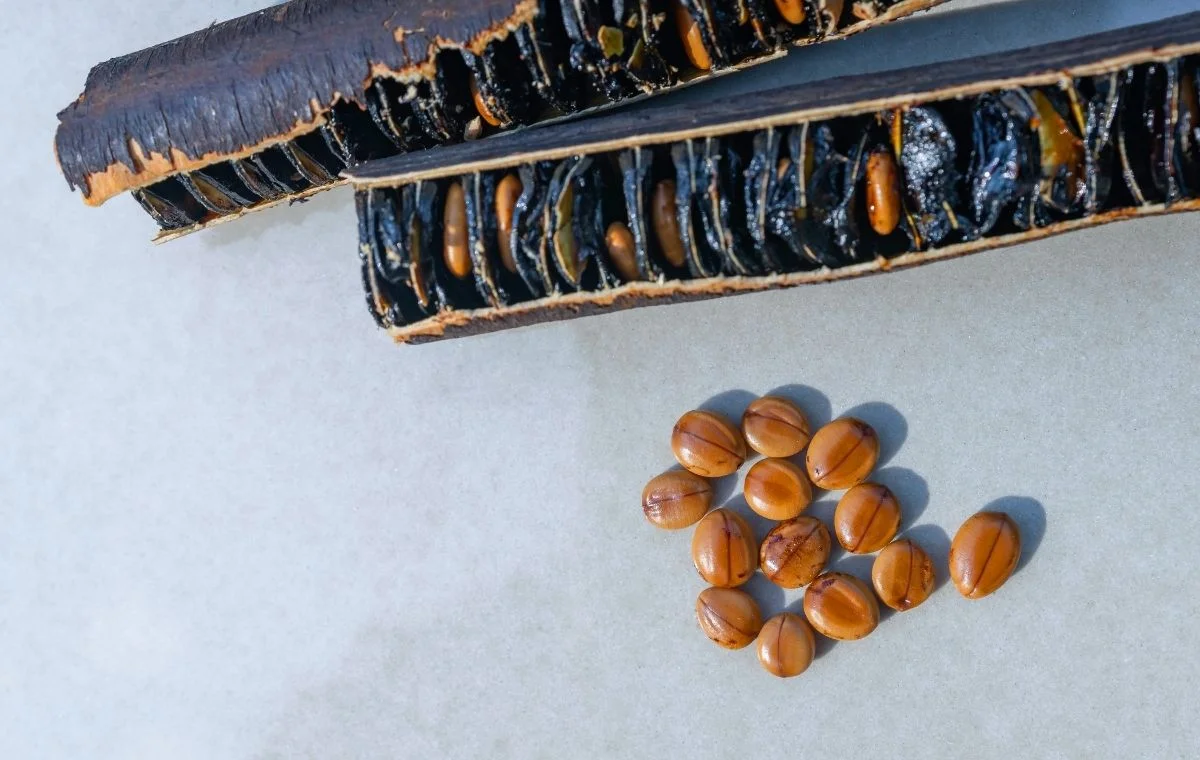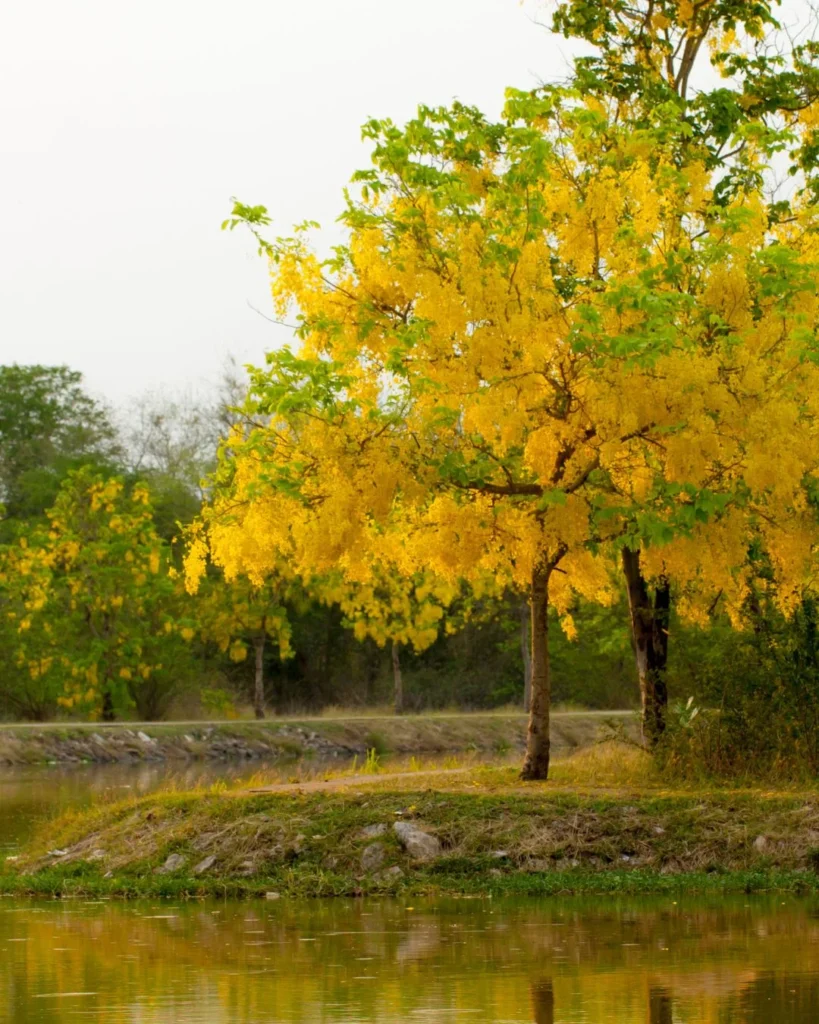The Golden Shower Tree, scientifically known as Cassia fistula, is a notable deciduous ornamental tree for its spectacular flowering. Native to South Asia, especially India, Thailand, and other tropical regions, this species is widely cultivated around the world for its aesthetic beauty.
With rapid growth and a medium stature, the Golden Shower Tree typically reaches heights of 16 to 33 feet (5 to 10 meters). Its trunk, elegant and slightly twisted, can be either single or multi-stemmed, featuring a gray-greenish bark. The rounded canopy, about 13 feet (4 meters) in diameter, gives the tree a harmonious shape. The leaves are pinnate, alternate, with 4 to 8 pairs of elliptical, acuminate leaflets, and a vibrant green color.

During the summer, the tree stands out with its impressive raceme-type inflorescences. These inflorescences are pendulous, long, about 12 inches (30 cm) in length, and consist of numerous large, pentamerous, yellow flowers, creating a stunning visual spectacle. Following the flowering, the plant produces legume-type fruits, cylindrical, brown in color, housing 25 to 100 lenticular, shiny brown seeds. These seeds are enveloped in a sweet pulp, known for its medicinal properties, although the seeds themselves are toxic and should not be ingested.
In landscaping, the Golden Shower Tree is often used as a focal point in gardens, either solitary or in small groups, especially during its blooming season. Even outside the flowering season, it remains a valuable addition to the garden, providing cool and pleasant shade. Due to the absence of aggressive roots, it is an excellent choice for sidewalk and urban area planting. Cassia fistula plays an important role in its native ecosystems, serving as a food source for various species of birds and insects. During its flowering season, the flowers attract bees and butterflies, contributing to the cross-pollination of other plants in the region.

In India, the Golden Shower Tree is considered a sacred tree and is often planted in temples. It is the national flower of Thailand and the state symbol of Kerala, India, where it is known as “Kani Konna” and plays a central role in the Malayali New Year celebrations, Vishu. Besides its ornamental value, the Golden Shower Tree has applications in phytotherapy, notably in Ayurvedic medicine. It is recognized for its detoxifying and purifying properties. However, it is crucial to note that, due to its toxic properties, the medicinal use of the plant should always be under medical supervision.
Cultivation of Cassia fistula requires specific conditions for healthy development. It prefers full sun exposure, in fertile, well-drained soil enriched with organic matter, and needs regular irrigation. The species adapts well to subtropical and tropical climates and, once established, can tolerate short periods of drought. Although Cassia fistula is a low-maintenance tree, pruning can be performed to shape and control size. Pruning is most appropriate after the flowering season, so as not to affect the next year’s flower production. It is important to remove dry or damaged branches to maintain the tree’s health.

Generally, the Golden Shower Tree is resistant to many pests and diseases. However, like any plant, it can occasionally be susceptible to insect attacks such as aphids and fungal diseases, especially in conditions of excessive moisture.
Propagation is primarily done through seeds, which require a dormancy-breaking treatment for more efficient germination. This process can be accomplished through scarification or immersion in a sulfuric acid solution for 5 to 20 minutes, followed by a period of soaking in water before planting. This careful preparation of the seeds is essential for ensuring effective germination and healthy plant growth.



